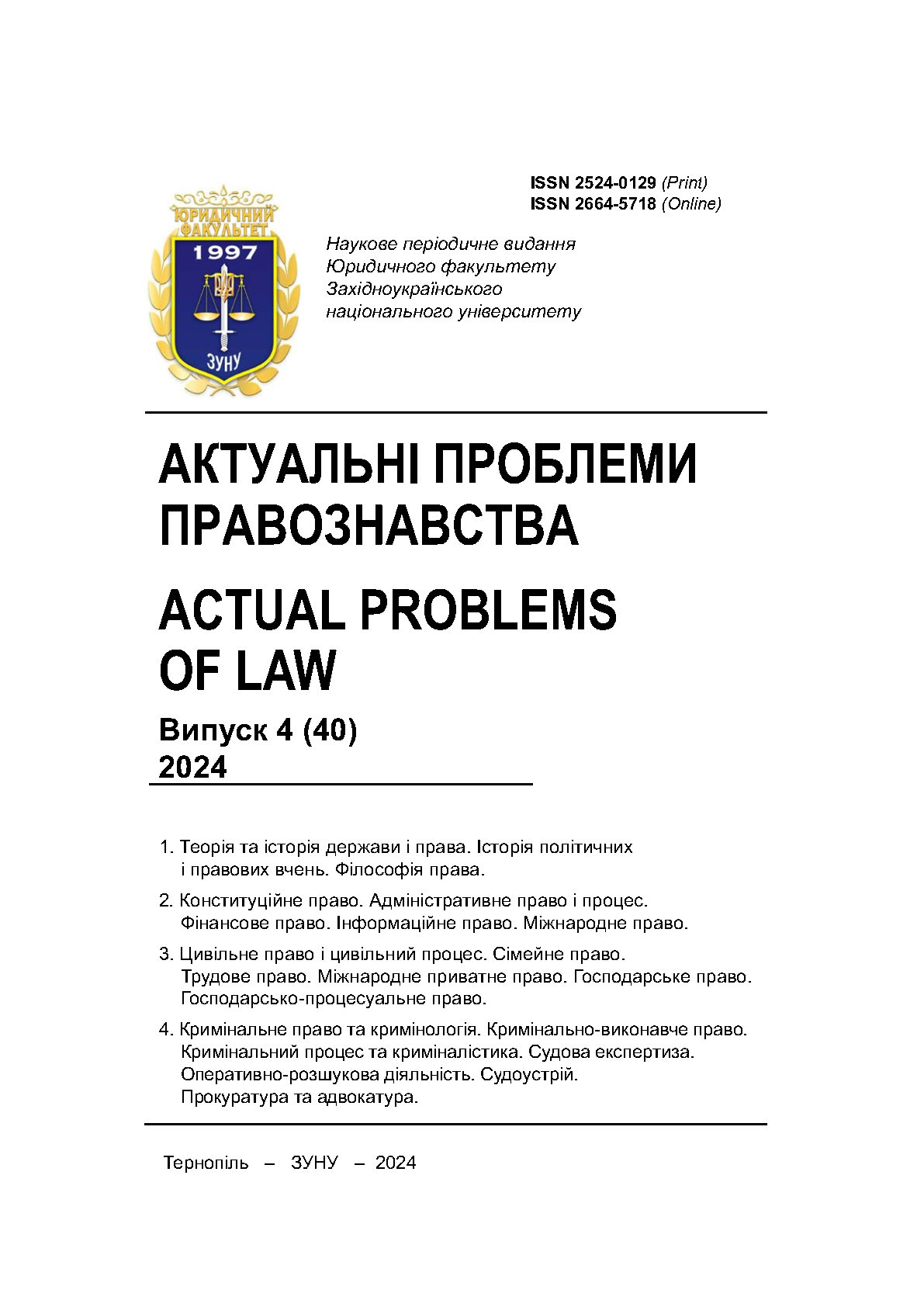European Banking Union: the importance of a single supervisory mechanism in the context of Ukraine's European integration aspirations
DOI:
https://doi.org/10.35774/app2024.04.116Keywords:
European Banking Union, banking supervision, European Central Bank, European integration, financial stabilityAbstract
This article is devoted to the analysis of the structure and functioning of the European Banking Union, in particular the Single Supervisory Mechanism under the leadership of the European Central Bank. The paper examines the legal framework and practical aspects of banking supervision in the EU, the mechanisms of cooperation between the ECB and national competent authorities, as well as the possibilities of extending supervisory powers to countries outside the eurozone. Particular attention is paid to the significance of the experience of the EU Banking Union for Ukraine in the context of its European integration aspirations and the need to adapt banking legislation to European standards.
It is established that the creation of the European Banking Union has significantly strengthened the stability of the EU banking system through the introduction of uniform standards of supervision and regulation. It is determined that the dual mandate of the ECB as a competent and authorized body provides an effective mechanism of banking supervision, which combines centralized management with local expertise. The importance of a mechanism of close cooperation for countries outside the eurozone is proven, which creates opportunities for harmonization of banking supervision across the EU and is of particular importance for Ukraine in the context of its European integration.
It is determined that the ECB has broad powers to carry out supervisory activities, including the right to request information, conduct general investigations and carry out on-site inspections.
The focus is on the legal framework of the ECB's activities as a supervisory authority, including the scope of its powers and the mechanisms for their implementation. The features of the reservation on the exclusive purpose of the appointment and its role in preventing regulatory conflicts are analyzed. The practical aspects of the implementation of banking supervision are considered, including the conduct of investigations, inspections and checks of documentation of credit institutions.
References
Véron, N. (2015). Europe’s radical banking union. Bruegel essay and lecture series [in English]
Regulation (EU) No 806/2014 of the European Parliament and of the Council of 15 July 2014 establishing uniform rules and a uniform procedure for the resolution of credit institutions and certain investment firms in the framework of a Single Resolution Mechanism and a Single Resolution Fund. URL: http://data.europa.eu/eli/reg/2014/806/oj [in English]
Euro Area Summit Statement. Council of the European Union. 2012. Retrieved from https://www.bundesregierung.de/resource/blob/2065474/605684/c82be89facfb1dddd60c5a3fe41bb5f2/2012-06-29-eu-gipfelerklaerung-englisch-data.pdf?download=1 [in English]
A stronger Banking Union: New measures to reinforce deposit protection and further reduce banking risks (2015). European Commission - Press release. Retrieved from https://ec.europa.eu/commission/presscorner/api/files/document/print/en/ip_15_6152/IP_15_6152_EN.pdf [in English]
Schoenmaker, D. (1997). Banking Supervision and Lender of Last Resort in EMU. European Economic and Monetary Union: The Institutional Framework. / M. Andenas, L. Gormley, C. Hadjiemmanuil and I. Harden (eds). Kluwer International, London [in English]
Pisani-Ferry, J., Sapir, A., Véron N., Wolff G. What kind of European Banking Union? Policy Contribution 2012/12, Bruegel [in English]
ECB Annual Report on supervisory activities 2015. European Central Bank, Frankfurt, 2016. Retrieved from https://www.bankingsupervision.europa.eu/press/other-publications/annual-report/pdf/ssm.ar2015.en.pdf [in English]
Council Regulation (EU) No 1024/2013 of 15 October 2013 conferring specific tasks on the European Central Bank concerning policies relating to the prudential supervision of credit institutions. Retrieved from http://data.europa.eu/eli/reg/2013/1024/oj [in English]





